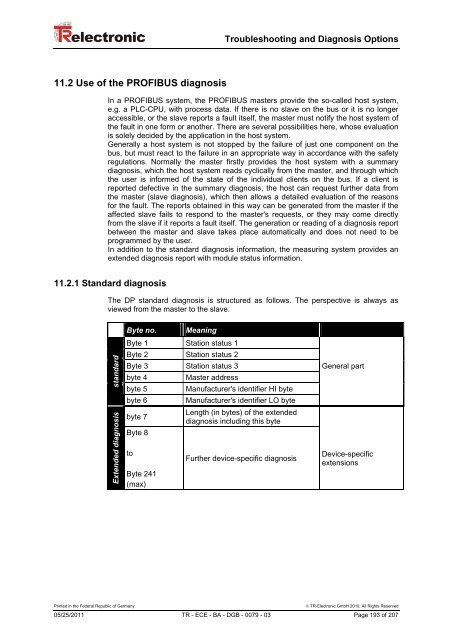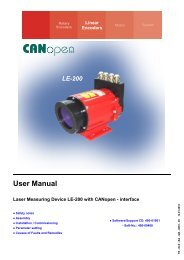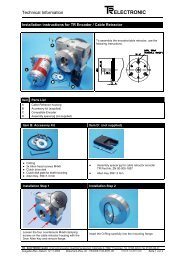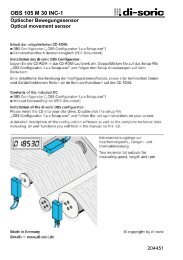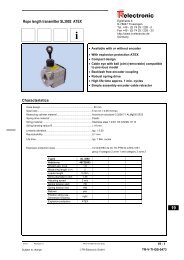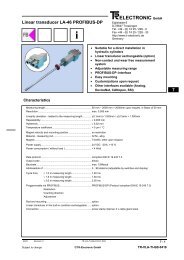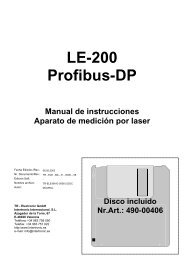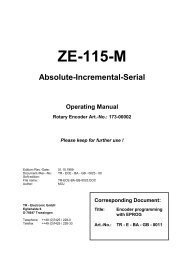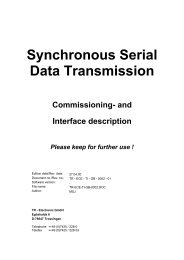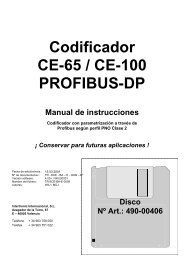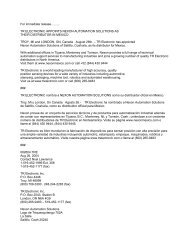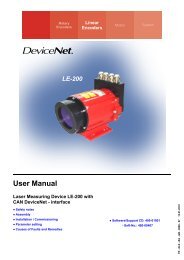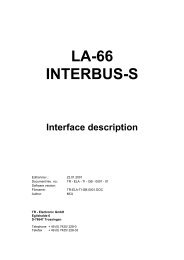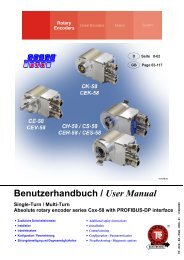Benutzerhandbuch / User Manual - TR Electronic
Benutzerhandbuch / User Manual - TR Electronic
Benutzerhandbuch / User Manual - TR Electronic
You also want an ePaper? Increase the reach of your titles
YUMPU automatically turns print PDFs into web optimized ePapers that Google loves.
Troubleshooting and Diagnosis Options<br />
11.2 Use of the PROFIBUS diagnosis<br />
In a PROFIBUS system, the PROFIBUS masters provide the so-called host system,<br />
e.g. a PLC-CPU, with process data. If there is no slave on the bus or it is no longer<br />
accessible, or the slave reports a fault itself, the master must notify the host system of<br />
the fault in one form or another. There are several possibilities here, whose evaluation<br />
is solely decided by the application in the host system.<br />
Generally a host system is not stopped by the failure of just one component on the<br />
bus, but must react to the failure in an appropriate way in accordance with the safety<br />
regulations. Normally the master firstly provides the host system with a summary<br />
diagnosis, which the host system reads cyclically from the master, and through which<br />
the user is informed of the state of the individual clients on the bus. If a client is<br />
reported defective in the summary diagnosis, the host can request further data from<br />
the master (slave diagnosis), which then allows a detailed evaluation of the reasons<br />
for the fault. The reports obtained in this way can be generated from the master if the<br />
affected slave fails to respond to the master's requests, or they may come directly<br />
from the slave if it reports a fault itself. The generation or reading of a diagnosis report<br />
between the master and slave takes place automatically and does not need to be<br />
programmed by the user.<br />
In addition to the standard diagnosis information, the measuring system provides an<br />
extended diagnosis report with module status information.<br />
11.2.1 Standard diagnosis<br />
The DP standard diagnosis is structured as follows. The perspective is always as<br />
viewed from the master to the slave.<br />
standard<br />
di i<br />
Extended diagnosis<br />
Byte no.<br />
Meaning<br />
Byte 1 Station status 1<br />
Byte 2 Station status 2<br />
Byte 3 Station status 3 General part<br />
byte 4<br />
Master address<br />
byte 5<br />
Manufacturer's identifier HI byte<br />
byte 6<br />
Manufacturer's identifier LO byte<br />
byte 7<br />
Byte 8<br />
to<br />
Byte 241<br />
(max)<br />
Length (in bytes) of the extended<br />
diagnosis including this byte<br />
Further device-specific diagnosis<br />
Device-specific<br />
extensions<br />
Printed in the Federal Republic of Germany<br />
© <strong>TR</strong>-<strong>Electronic</strong> GmbH 2010, All Rights Reserved<br />
05/25/2011 <strong>TR</strong> - ECE - BA - DGB - 0079 - 03 Page 193 of 207


